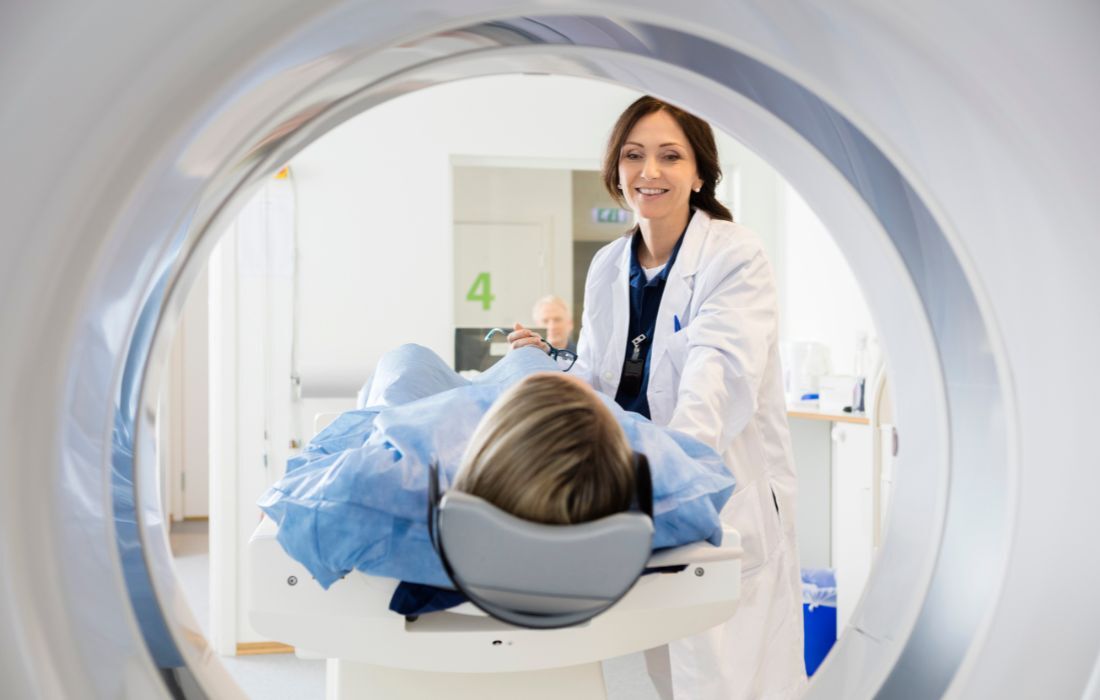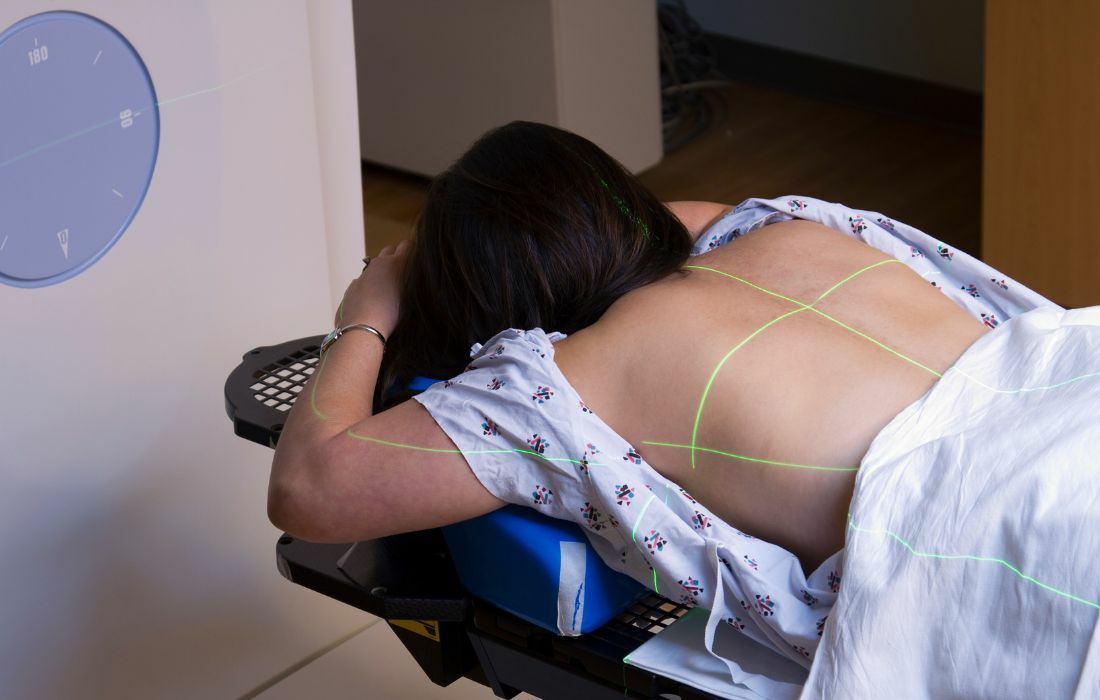June 5, 2024
A Lung Nodule Diagnosis: Does It Mean Cancer?

Receiving a lung nodule diagnosis is not usually as scary as it seems. It’s easy to assume that a nodule, or small cluster of cells in your lungs, means you have lung cancer. There’s good news, however. Most nodules are benign (non-cancerous) and, in many cases, do not require treatment. In most cases, lung nodules are found when running a test or performing an X-ray for a non-related medical condition. Here is what you can expect after a lung nodule is detected.
What to Know About Lung Nodules and What Causes Them
An abnormal cluster of cells that forms in lung tissue is known as a pulmonary nodule or, more commonly, a lung nodule. These nodules often develop following a lung infection and are pretty common, appearing in approximately half of adults who undergo chest scans for other medical reasons. Fortunately, the majority of lung nodules are noncancerous.
Over time, these cells can become calcified, making them hard and visible on chest X-rays. Some individuals may have just one lung nodule, while others may have several. Doctors may refer to these nodules as "shadows" because they appear as white spots on X-rays. Lung nodules vary in size, ranging from 3mm to 25mm or more in diameter, with those measuring less than 9mm classified as small nodules.
Previous infections are not the only contributors to lung nodules. Prolonged exposure to air irritants and certain autoimmune diseases, such as rheumatoid arthritis and sarcoidosis, can also cause them to develop.
Although most lung nodules are harmless, they are sometimes small cancerous tumors. Patients who are suspected of having cancer will require further diagnostic tests and procedures. Based on that information, the doctor can confirm a diagnosis of lung cancer.
Will a Non-Cancerous Lung Nodule Require Treatment?
Patients with small, noncancerous nodules generally do not require treatment. Instead, they can be safely monitored periodically with another CT scan or chest X-ray. These nodules typically do not cause symptoms or interfere with respiratory functions. However, if you start to experience symptoms, it can mean the nodule grew and is placing pressure on the airway, leading to difficulty breathing, coughing, wheezing, or respiratory infections. If you are being monitored for a lung nodule, you should contact your doctor immediately if you:
Notice a change in your cough or cough up blood
Develop new shortness of breath, chest discomfort, fever, or chills
Experience unexplained weight loss
Need more information about your lung nodule and options
It's important to note that experiencing symptoms associated with lung cancer does not necessarily mean that your nodule is cancerous. But, it's best to schedule an appointment with the doctor to monitor the lung nodules so they can decide if you should run additional tests such as a biopsy.
Finding Nodules and Lung Cancer Through Screening of High-Risk Patients Results in Better Outcomes
Smoking is a well-known cause of lung cancer. And because smoke is an irritant, it is also a major factor in the development of lung nodules. Both can be found during lung cancer screening.
Not everyone can be screened for lung cancer, however. It’s primarily available to those who have a long history of smoking. A low-dose CT scan is used to see the inside of the lungs and to look for cancer. Finding it early through a screening test makes treating it much easier.
According to the CDC recommendation, people who are at high risk for lung cancer and qualify for screening must meet all of the following requirements:
Be 50 to 80 years old, AND
Have a history of “20 pack-year” smoking, AND
Currently smoke or have quit within the last 15 years
A "pack-year" is defined by the CDC as smoking one pack of cigarettes each day for a year. By this calculation, a pack-year could be equal to smoking a pack a day for 10 years or smoking two packs a day for five years.
Most health insurance plans, including Medicare, cover the cost of lung cancer screening if you meet the above criteria.
The best way to reduce your risk of developing lung nodules and lung cancer is to quit smoking altogether.

How Cancerous Lung Nodules Are Determined
If the doctor suspects that one or more nodules could be cancer, they’re likely to perform a biopsy. This is the only definitive way to confirm the presence of cancer. Nodules 9 mm and larger will typically undergo a biopsy, and smaller nodules may be biopsied if they grow suddenly or have rigid edges.
After a biopsy, the samples are examined by a pathologist who will look for signs of cancer, infection, scarring, or other issues. If cancer is found, more tests will be performed to identify the cancer type.
Next Steps After Being Diagnosed With a Cancerous Nodule
If your lung biopsy results confirm a cancerous nodule, the next step is to consult a medical oncologist. An oncologist is a doctor who specializes in cancer. Early-stage lung cancers can generally be treated effectively with surgery and/or radiation therapy. Treatment plans for lung cancer could also include targeted therapy and chemotherapy, which may be needed if the cancer is larger and/or has spread throughout the lung or even to other areas of the body.

Lung Cancer Care Throughout Brevard County, Florida
If you live in the Brevard County area and have been recently diagnosed with lung cancer, contact the lung cancer specialists at Cancer Care Centers of Brevard. We offer patients access to advanced cancer treatments at our Palm Bay, Melbourne, Merritt Island, and Rockledge, Florida clinics. We are here to talk to you about your available treatment options, which may include access to clinical trials through our Brevard County locations.
Categories: Lung Cancer